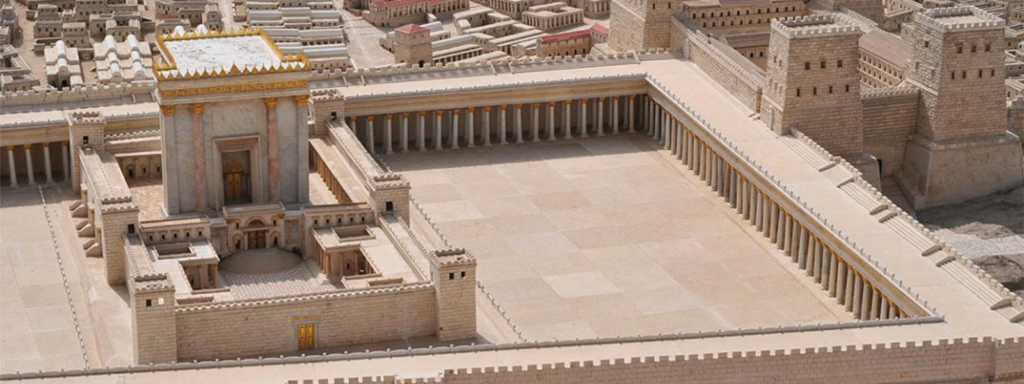The Prophecies of Isaiah: Babylon, the Temple’s Destruction, and the Unexpected Rise of a Small City

The Book of Isaiah is rich with prophetic visions that span from immediate warnings to far-reaching predictions. Among these, Isaiah’s prophecies concerning Babylon stand out for their historical and theological significance. In particular, the prophecy of Babylon’s rise and the eventual destruction of the temple in Jerusalem offers a fascinating glimpse into the dynamics of ancient empires and divine foresight.
Babylon: A Small City with a Grand Future

At the time Isaiah delivered his prophecies, around 740-700 BCE, Babylon was not the mighty empire we later come to recognize. Instead, it was a relatively insignificant city, overshadowed by the dominant Assyrian Empire. The Assyrians, known for their military prowess and expansive empire, were the undisputed rulers of the region. Babylon was merely a blip on the radar, a city with little power or influence compared to the Assyrian juggernaut.
Yet, Isaiah spoke of a future where Babylon would rise to prominence. In Isaiah 13:19, he prophesied, “Babylon, the jewel of kingdoms, the glory of the Babylonians’ pride, will be overthrown by God like Sodom and Gomorrah.” This prediction was astonishing, considering Babylon’s humble status at the time. It suggested a dramatic shift in the balance of power, one that seemed improbable given the Assyrian dominance.
Historical records support this transition. Babylon, once a minor city, rose to prominence under the leadership of Nebuchadnezzar II (605-562 BCE), becoming a significant power and cultural center in the ancient world .

The Destruction of the Temple
Isaiah’s prophecies also foretold the destruction of the temple in Jerusalem, an event that would deeply impact the Jewish people. In Isaiah 39:6, he warned King Hezekiah, “The time will surely come when everything in your palace, and all that your predecessors have stored up until this day, will be carried off to Babylon. Nothing will be left, says the Lord.” This dire prediction pointed to a future calamity, where the sacred and central symbol of Jewish faith and identity would be devastated.
The destruction of the temple was not just a physical loss but a profound spiritual and cultural blow. It signified a period of exile and reflection, a time when the people of Israel would grapple with their relationship with God and their understanding of His plans. The Babylonians fulfilled this prophecy in 586 BCE, when they besieged Jerusalem and destroyed Solomon’s Temple, leading to the Babylonian Exile .
Assyria: The High Empire
To fully grasp the audacity of Isaiah’s prophecies, it’s crucial to understand the context of Assyrian dominance. The Assyrians were the superpower of the ancient Near East, known for their brutal conquests and efficient administration. Their empire stretched far and wide, encompassing numerous territories and peoples. They were the epitome of strength and control, making the rise of a small city like Babylon seem implausible.
However, history unfolded just as Isaiah had foretold. The Assyrian Empire began to decline after the death of Ashurbanipal in 627 BCE. Babylon seized this opportunity to rise. By 612 BCE, the Babylonians had sacked Nineveh, the Assyrian capital, marking the end of Assyrian dominance and the rise of the Neo-Babylonian Empire .
Under the rule of Nebuchadnezzar II, Babylon achieved unprecedented glory, becoming a center of culture, learning, and military might. The very city that once seemed insignificant now stood as a formidable force, fulfilling the prophetic vision.
The Fulfillment of Prophecy
Isaiah’s prophecies about Babylon and the destruction of the temple serve as a powerful reminder of the divine orchestration in the affairs of nations. They highlight the transient nature of earthly empires and the enduring sovereignty of God. Despite Babylon’s initial obscurity and the Assyrian supremacy, the prophetic words came to pass, demonstrating the reliability and authority of Isaiah’s messages.
For readers today, these prophecies encourage a deeper trust in divine providence. They remind us that even when situations appear unlikely or impossible, there is a higher plan at work. The rise of Babylon from a small city to a grand empire and the subsequent fulfillment of Isaiah’s prophecies underscore the remarkable ways in which history unfolds according to divine will.
As we reflect on these ancient predictions, we gain a greater appreciation for the intricate tapestry of history and the profound insights provided by the prophets. Isaiah’s words continue to resonate, offering timeless lessons about faith, resilience, and the overarching power of God in the world.

References:
- Isaiah 13:19 – Prophecy of Babylon’s overthrow.
- Isaiah 39:6 – Prophecy of the temple’s destruction.
- 586 BCE – Destruction of the temple in Jerusalem by the Babylonians .
- 627 BCE – Death of Ashurbanipal and the beginning of Assyrian decline .
- 612 BCE – Fall of Nineveh and the end of Assyrian dominance .
- 605-562 BCE – Reign of Nebuchadnezzar II and the rise of the Neo-Babylonian Empire .
